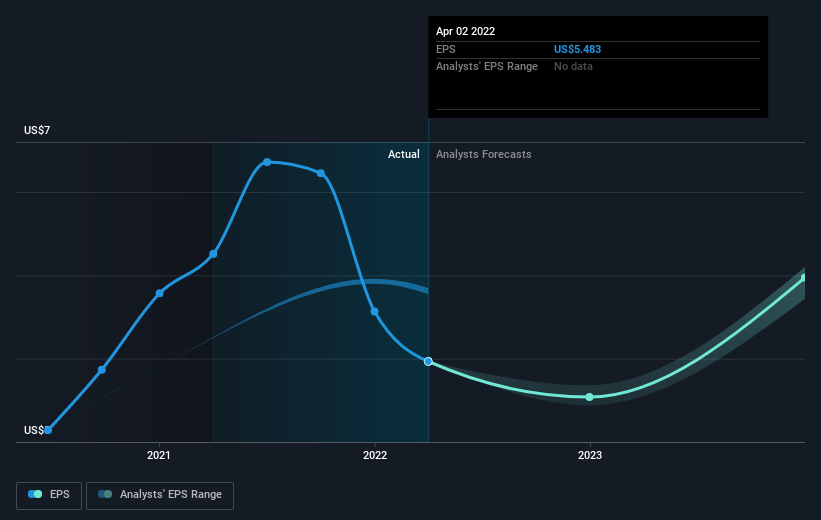USANA Health Sciences' (NYSE:USNA) earnings have declined over year, contributing to shareholders 28% loss
Investors can approximate the average market return by buying an index fund. When you buy individual stocks, you can make higher profits, but you also face the risk of under-performance. Investors in USANA Health Sciences, Inc. (NYSE:USNA) have tasted that bitter downside in the last year, as the share price dropped 28%. That's well below the market decline of 10%. However, the longer term returns haven't been so bad, with the stock down 2.1% in the last three years. Shareholders have had an even rougher run lately, with the share price down 14% in the last 90 days.
On a more encouraging note the company has added US$68m to its market cap in just the last 7 days, so let's see if we can determine what's driven the one-year loss for shareholders.
Check out our latest analysis for USANA Health Sciences
To quote Buffett, 'Ships will sail around the world but the Flat Earth Society will flourish. There will continue to be wide discrepancies between price and value in the marketplace...' One imperfect but simple way to consider how the market perception of a company has shifted is to compare the change in the earnings per share (EPS) with the share price movement.
Unfortunately USANA Health Sciences reported an EPS drop of 10% for the last year. The share price decline of 28% is actually more than the EPS drop. This suggests the EPS fall has made some shareholders are more nervous about the business.
The image below shows how EPS has tracked over time (if you click on the image you can see greater detail).
Before buying or selling a stock, we always recommend a close examination of historic growth trends, available here.
A Different Perspective
While the broader market lost about 10% in the twelve months, USANA Health Sciences shareholders did even worse, losing 28%. However, it could simply be that the share price has been impacted by broader market jitters. It might be worth keeping an eye on the fundamentals, in case there's a good opportunity. On the bright side, long term shareholders have made money, with a gain of 3% per year over half a decade. If the fundamental data continues to indicate long term sustainable growth, the current sell-off could be an opportunity worth considering. Most investors take the time to check the data on insider transactions. You can click here to see if insiders have been buying or selling.
If you like to buy stocks alongside management, then you might just love this free list of companies. (Hint: insiders have been buying them).
Please note, the market returns quoted in this article reflect the market weighted average returns of stocks that currently trade on US exchanges.
Have feedback on this article? Concerned about the content? Get in touch with us directly. Alternatively, email editorial-team (at) simplywallst.com.
This article by Simply Wall St is general in nature. We provide commentary based on historical data and analyst forecasts only using an unbiased methodology and our articles are not intended to be financial advice. It does not constitute a recommendation to buy or sell any stock, and does not take account of your objectives, or your financial situation. We aim to bring you long-term focused analysis driven by fundamental data. Note that our analysis may not factor in the latest price-sensitive company announcements or qualitative material. Simply Wall St has no position in any stocks mentioned.

